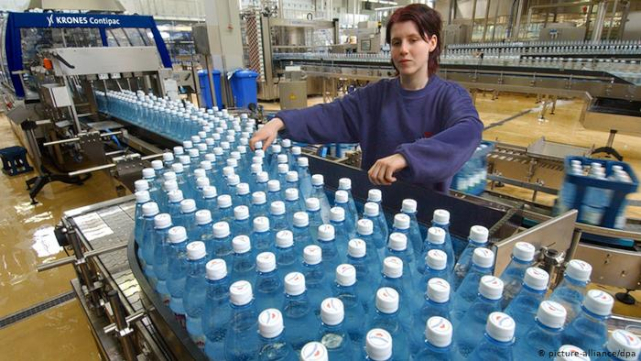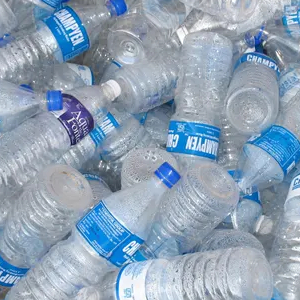That’s the hope of researchers who have completed initial experiments showing that it’s possible to ‘ferment’ elements of plastic waste into what we known as ‘artificial vanilla’ flavouring. The chemical they’re producing is amazingly similar to one found in common water bottle plastic.
 A typical PET water bottle filling line…
A typical PET water bottle filling line…
I almost fell of my chair when I saw the headline. But, then I decided to give the test tube jockeys the benefit of the doubt – long enough to read the story, anyway.
A little background…
It turns out that what we cooks all know as ‘artificial vanilla flavouring’ (and usually avoid) is really a compound called vanillin, which is widely used in the food processing industry. Real vanilla is just too expensive; manufacturers would have to price the products it’s used in so high that no one would buy them. The key to the new ‘upcycling’ process turning plastic into vanillin is that a major component of food packaging plastic, Polyethylene terephthalate (PET) is already very similar to vanillin. A few tweaks is all it takes to make the transformation.
Meanwhile, we’re told that of 85 percent of commercial vanillin is currently synthesized from fossil fuel chemicals. So finding a way to make it from a serious pollutant like food plastic would be a real improvement in not one but two ways.
I was shocked to read food blogger Omari Allen’s assertion that, “Humankind is often impulsive with innovation. In other words, things are created faster than ways to manage them. A fun fact is that there’s been more plastic manufactured within the first 10 years of this century than the whole of our previous one. Now, we produce and throw away over 380 million tons of plastic each year.”
The secret revealed..
A report by University of Edinburgh researchers Dr.
My take
If humans around the world trash 380 million tons of plastics waste a year, though, how much of a dent will vanillin conversion make in the overall problem? Global demand for ‘immitation vanilla flavouring’ exceeded 37,000 tons in 2018 (the latest year for which numbers are available). That was greater than the demand for natural, pure vanilla. So Sadler’s and Wallace’s great discovery may not make a huge dent in the problem. But if other researchers put on their thinking caps (not to be confused with tinfoil hats), and develop other plastic-eating processes that produce useful materials, we’ll be well on our way to killing the beast.
I also think it’s noteworthy to point out that three major water and soft drink (soda) bottlers have already pledged to work together to set up ‘circular’ recycle/reuse systems for their PET plastic bottles. According to Recycling International, combined recycling of PET beverage bottles in 2019 (the last year for which numbers are available) was barely 35 percent.
Now, we just have to get more people recycling their plastic food packaging rather than just tossing it away.
~ Maggie J.

